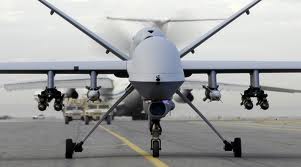
January 2013
As tensions rise in the Asia Pacific region, U.S. arms companies expect to make significant sales to those in the region looking to counter recent aggression by China and North Korea.
Since the United States has moved ahead with the pivot to the region, strengthening the position of critical allies is atop the agenda, which is good news for U.S. arms companies. The increase in spending in the Pacific will likely offset budget-cuts from Congress that decrease U.S. arms-purchases.
Driving the spending more than the pivot though, is the recent Chinese aggression. The country has recently upped their own military spending and initiated several maritime border disputes in the South China Sea and East China Sea. This is having a reactive domino-effect, causing all other regional players to invest heavily in defense.
The Defense Security Cooperation Agency, which is responsible for brokering international arms deals to U.S. allies, told Reuters news agency that arms deals in the Pacific rose five percent in 2012, indicating agreements for future delivery of materiel.
Globally, the United States total arms sales totaled $66 billion USD in 2011, accounting for nearly 80% of such transactions worldwide. The leading recipients were Saudi Arabia and India.
Further fueling predictions for a rise in sales were the December-election victories of pro-U.S. leaders in Japan and South Korea. They will likely be open to U.S. arms-transfers, and the Obama administration is likely to be interested as well.
This administration places heavy strategic value on such arms deals for numerous reasons. They strengthen U.S. partnerships, while equipping allies with capabilities for self-reliant self-defense, decreasing the potential need for direct U.S. military involvement in conflict. Additionally, in case of conflict, fighting alongside properly equipped allies is a key advantage that the U.S. would like.
For instance, just this past December, Northrop Grumman proposed the sale of their RQ-4 Global Hawk spy drone to South Korea, the first time such a deal was offered to a country in the region. The RQ-4 is capable of flying at high-altitudes and piercing clouds to surveil targets on the ground in day or night.
South Korea’s interest is surely fueled by North Korea’s recent movement of ballistic missiles and nuclear testing. The RQ-4 should help them keep a closer eye on their belligerent neighbor to the north. However, sale of this piece to South Korea has spurred interest from other countries in the region, such as Australia and Japan.
Japan has also been seeking ballistic missile defense after recent North Korean threats. The United States supplied immediate support to the important regional ally, and may seek to sell Aegis missile defense systems to the country so they can handle their own future defense.
Japan has already decided to make an order of F-35 Joint Strike Fighter aircraft as the next centerpiece of its aerial capabilities. The plane is also being considered by South Korea and Singapore, who are looking to spend billions to upgrade their air-forces.
Although in the western part of the region, India is a huge player in the arms-race, as it plans to spend $100 billion USD in the next decade in order to counter the Chinese military expansion. As the second highest recipient of U.S.-based arms contracts in 2011, the United States has already sold $8 billion worth of arms to India since 2008.
Taiwan is another major recipient of U.S. arms. The small disputed island nation is upgrading their F-16 fighters with cutting-edge software, including advanced radar-capabilities and electronic targeting systems.
Due to a 1979 treaty with Taiwan, which is constantly under threat from Beijing-based aggression, the United States is required to supply the country with arms to ensure its self-defense capabilities.
The United States will also increase its own military presence in the region, and aside from helping these nations modernize their militaries, will also conduct extensive training and cooperative operations to bolster their soft knowledge.